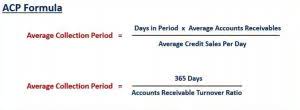Content
- www.bmf.cpa
- Create Study Materials
- GAAP: Accounting Rules for Capitalizing Costs
- Simplified method of accounting change
- Aggregate earnings and asset prices
- What’s Not Included in Research and Development Accounting?
- Understanding Research and Development Expenses
- Aggregate market reaction to earnings announcements

Zoop Corporation purchased for $300,000 a 30% interest in Murphy, Inc. This investment enables Zoop to exert significant influence over Murphy. During the year, Murphy earned net income of $180,000 and paid dividends of $60,000. (b) Prepare the journal entry to record the interest revenue on December 31, 2017. This content outlines initial considerations meriting further consultation with life sciences organizations, healthcare organizations, clinicians, and legal advisors to explore feasibility and risks. Viewed from that angle, this one resource provides you with a roadmap to resolving the many varied issues that can arise with R&D activities.
- Because success is highly uncertain, accounting has long faced the challenge of determining whether such costs should be capitalized or expensed.
- Research and development activities may include personnel costs, materials and equipment costs, and indirect costs.
- Costs to
further develop the software are capitalized, and then amortized like other
short-lived intangibles. - The Research and Development (R&D) expense refers to spending related to funding internal initiatives around introducing new products or further developing their existing offerings.
- Research and Development (R&D) is a process by which a company obtains new knowledge and uses it to improve existing products and introduce new ones to its operations.
- No one should act upon such information without appropriate professional advice after a thorough examination of the particular situation.
- Receive timely updates on accounting and financial reporting topics from KPMG.
Meta already had the internal resources necessary to build out a virtual reality division, but by acquiring an existing virtual reality company, it was able to expedite the time it took them to develop this capability. There may also be research and development arrangements where a third party (a sponsor) provides funding for the research and development activities of a business. The arrangements may be designed to shift licensing rights, intellectual property ownership, an equity stake, or a share in the profits to the sponsors.
www.bmf.cpa
FASB defines research as a planned search or investigation to discover new knowledge; it defines development as the translation of research findings into a plan or design. Under IFRS (IAS 382), research costs are expensed, like US GAAP. However, unlike US GAAP, IFRS has broad-based guidance that requires companies to capitalize development expenditures, including internal costs, when certain criteria are met.

Thus, except for some relatively minor exceptions, all research and development costs are expensed as incurred according to U.S. The probability for success is not viewed as relevant to this reporting. The total cost incurred each period for research and development appears on the income statement as an expense regardless of the chance for success. Research and development costs related to retail software (software
for sale) are expensed under different rules. Once a project reaches technological
feasibility, development costs can be capitalized in a manner similar to
inventory production costs. As the software is sold, the capitalized costs are
amortized to expenses.
Create Study Materials
The Research and Development (R&D) expense refers to spending related to funding internal initiatives around introducing new products or further developing their existing offerings. Stephan Curry, Inc., spent $68,000 in attorney fees while developing the trade name of its new product, the Mean Bean Machine. Prepare the journal entries to record the $68,000 expenditure and the first year’s amortization, using an 8-year life.
- According to the Financial Accounting Standards Board, or FASB, generally accepted accounting principles, or GAAP, require that most research and development costs be expensed in the current period.
- Tech companies rely heavily on their research and development capabilities, so they have relatively outsized R&D expenses.
- Before any new product is released into the marketplace, it goes through significant research and development phases, which include a product’s market opportunity, cost, and production timeline.
- These innovations can take the form of process or product innovations, the latter of which entail products new to the firm (but not to the market), and products new to the market.
- Even if there is a future benefit, R&D costs should be expensed if they are incurred prior to the application development stage is achieved.
- Research and development is a systematic activity that combines basic and applied research to discover solutions to new or existing problems or to create or update goods and services.
Materials should be documented as inventories and allocated as consumed, and equipment should be capitalized and depreciated as utilized if the assets have alternative future uses. For example, a small business that develops new cosmetics might contract with an R&D company to assess the safety of a new product. Under GAAP, the company must expense the R&D cost and report it on the company’s current income statement. Basic research is concerned with the acquisition of new knowledge.
GAAP: Accounting Rules for Capitalizing Costs
In both
circumstances, accumulated depreciation is credited as usual. R&D expenditures are defined as expenditures incurred in connection with the taxpayer’s trade or business which represent research and development costs in the experimental or laboratory sense. The expenses may relate either to a general research program or a particular project.
What is accounting for research and development?
The accounting for research and development involves those activities that create or improve products or processes. The core accounting rule in this area is that expenditures be charged to expense as incurred.
Our study contributes to this literature by being the first to examine the predictability of accounting-based R&D at the macro level. Consequently, any decision maker evaluating a company that invests heavily in research and development needs to recognize that the assets appearing on the balance sheet are incomplete. Such companies spend money to create future benefits that are not being reported. The wisdom of that approach has long been debated but it is the rule under U.S. Difficult estimates are not needed and the possibility of manipulation is avoided.
Simplified method of accounting change
When a company spends money on R&D, whether through purchased services or through its own R&D department, it must record the cost as an expense in the period incurred, reports the Corporate Finance Institute. This includes the cost of materials, equipment and facilities that have no alternative futures – that is, items that the https://www.bookstime.com/articles/accounting-for-research-and-development company doesn’t use for other purposes. According to the Financial Accounting Standards Board, or FASB, generally accepted accounting principles, or GAAP, require that most research and development costs be expensed in the current period. However, companies may capitalize some software research and development, or R&D, costs.
The definition of a business is an area of change under both US GAAP and IFRS. Sign up for our email list to stay updated on the latest tax news and financial planning advice. Once you have viewed this piece of content, to ensure you can access the content most relevant to you, please confirm your territory. These materials were downloaded from PwC’s Viewpoint (viewpoint.pwc.com) under license.
Aggregate earnings and asset prices
If firms pass these cost savings on to their customers, lower production costs mean they can gain competitive advantages over their rivals in the product markets, which translates to higher sales and profits for these firms. It is important to note that there are exceptions to the rule of recording R&D as expenses. In some cases, when a business can recognize the fair value of research and development costs, they https://www.bookstime.com/ can be recorded as an asset and treated as such. An example may be a specialized software developed or purchased for research purposes, or a fixed asset that has an alternative future use. R&D providers must also expense the costs of performing R&D service for customers. However, the provider must report these expenses as the cost of services delivered, which it subtracts from revenue to determine gross income.

コメント